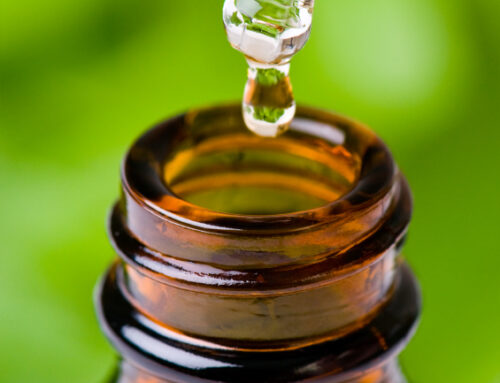Why Hypertonic Salt Rinses Work
Most nasal rinsing devices teach you to make what is called an isotonic rinse (about a 1/2 teaspoon of mineral salt to 10 oz of water). This means there are equal amounts of salt in the saline solution as in the cell walls of the body, and it comes close to the body’s pH. This rinse helps to stimulate the cilia and flush out excess mucous and particulate matter. Most expert neti pot rinsers know that if it burns when they rinse, they haven’t used enough salt. Pure water or water with low amounts of salt can feel acidic and actually aggravate the sinus cavities.
To create a hypertonic rinse, you double the salt. This means there is more salt in the saline solution than in the cell walls of the body. Here’s the benefit. Doubling the amount of salt activates an exchange of fluids through a phenomenon called osmotic pressure. The body recognizes that there is more salt in the saline solution than in the cell walls of the body. It wants to equalize the pressure so it releases fluid from the inflamed tissues. It’s quite remarkable!
Doesn’t it burn, you may ask? Doubling the salt creates a saline solution that is more alkaline than acidic. In other words, it shouldn’t burn. A hypertonic rinse will also help to liquefy mucous and decrease the pressure you feel associated with inflammation. While relief can be apparent right after rinsing for some individuals, it may take a few rounds for others. You can rinse up to 3 times a day with a hypertonic solution if you are fighting a cold.
Bottom line: If you sound nasally when you speak, and you are fighting a cold or have allergies, you could probably use a hypertonic rinse!
If you want the exact science behind this, Wikipedia does a fine job of explaining it. (http://en.wikipedia.org/wiki/Osmotic_pressure)







[…] A hypertonic rinse is a great way to ease inflammation and liquefy mucous. To create this solution, simply double the amount of salt you are using in your neti pot; 1 heaping teaspoon to 10 oz. of water. For more information on this see our blog titled Reduce Nasal Inflammation. […]
[…] Reducing Nasal Inflammation […]
Thank you for the explanation, it was informative. How can I reduce nasal inflammation on a toddler ( 4.5 year old)? Thank you.
Hi Pricila. Difficult question to answer. Some young children may be able to use a nasal rinsing device. A neti pot may be harder for a child of that age (although I know several people with children of the same age who use a neti pot). The hypertonic solution would work the same for adults as it would children. Good luck and we would love to hear any feedback.
If one does not have a cold or flu, buts gets congested at night, can they use the hypertonic solution? If so, can a daily hypertonic nasal rinse be done indefinitely? Thanks.
Hello Eddie, While you can use the hypertonic solution if you are not dealing with a cold or flu, I would caution you to use it over a prolonged period of time. I would encourage you to understand why you are becoming congested at night. Sometimes people are actually dry within their sinuses and it may feel like congestion, but it really just inflammation. The hypertonic solution will dry your sinuses out more and then you might be creating a cycle for yourself of excessive dryness. If you have a moment, call us in the office and we can discuss more in-depth and try to understand what practice might be the best for you.